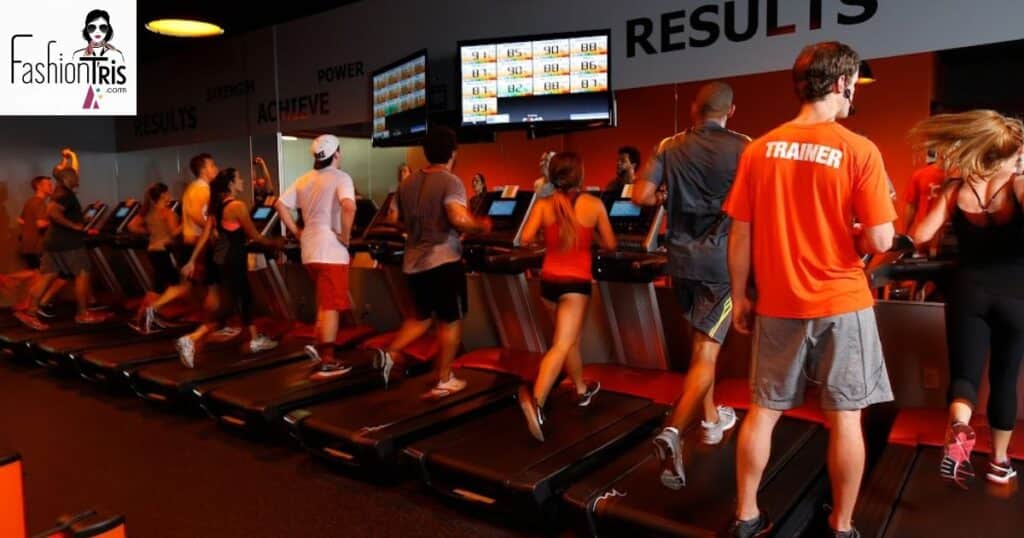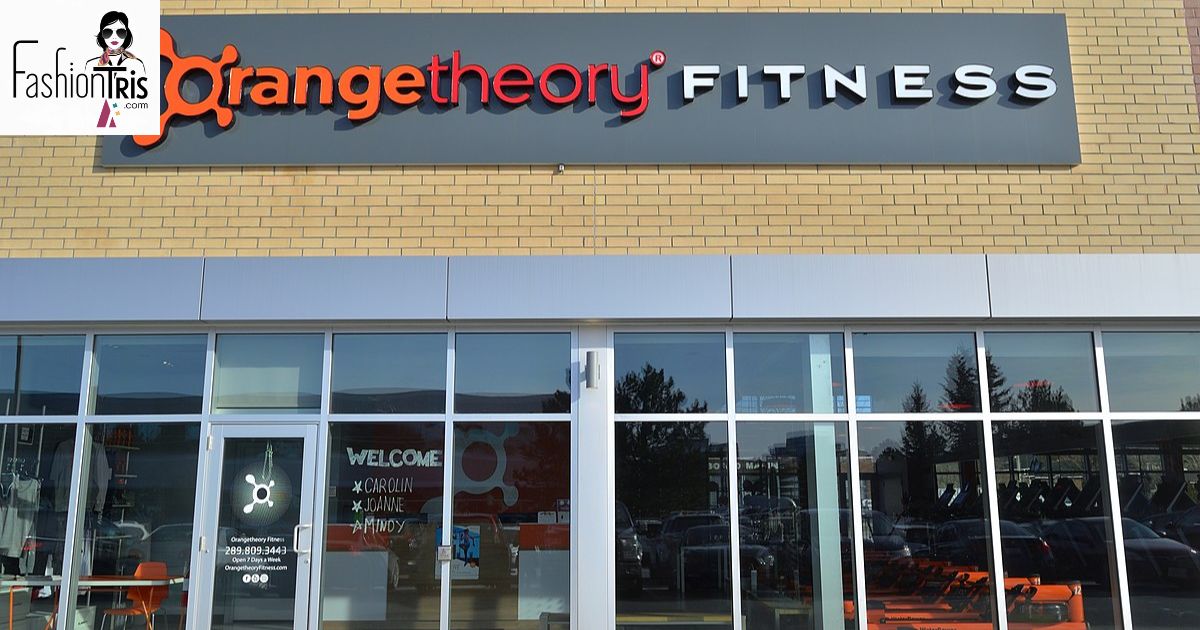Orangetheory is a popular group fitness franchise that offers high-intensity interval training workouts. Their classes are categorized into two main formats: 2G (2 Groups) and 3G (3 Groups).
Fitness enthusiast or considering joining the high-intensity interval training craze? If so, you’ve likely heard about the two main workout formats Orangetheory 2G Vs—3G Workouts. Whether you’re a seasoned Orangetheory veteran or a newcomer, understanding the differences between these formats can help you make the most of your workout experience.
Each option offers a unique challenge, from the number of stations to the intensity levels. So, get ready to dive into the world of Orangetheory and discover which format might be the perfect fit for your fitness goals and preferences.
What is Orangetheory Fitness?
Orangetheory Fitness is a group workout franchise offering one-hour, full-body sessions. It combines cardiovascular and strength training with heart rate monitoring to drive maximum calorie burn. The workouts are led by certified coaches and are designed to push participants into the orange zone, which is 84-91% of their maximum heart rate.
The Orangetheory workout uses a variety of equipment, including treadmills, rowing machines, TRX suspension training, free weights, and more. The sessions are structured in intervals that alternate between cardiovascular and strength training blocks.
The theory is that by pushing your heart rate into the orange zone for at least 12-20 minutes during the workout, you will continue burning calories for up to 36 hours after the workout ends through the afterburn effect.
Orangetheory Fitness 2G
Orangetheory Fitness has a workout called 2G. In this workout, there are two groups of people. One group uses the treadmills for running. The other group uses weights to build muscle strength.
The running part is customizable. This means each person can set their speed and incline on the treadmill based on their fitness level. Some may walk, some may jog, and others may run fast. The coach will guide everyone to push themselves.
For the muscle strength part, people use weights and other equipment to work all the major muscle groups in their body. This includes arms, legs, abs, and back muscles. The coach will show proper form and technique for the strength exercises.
The goal is to challenge yourself with running and strength training. Working hard in both areas can help you burn more calories and get you more robust and fit over time.
Orangetheory Fitness 3G
Orangetheory Fitness also has a workout called 3G. In this workout, people rotate through three different stations.
The first station is the treadmills: Here, people will walk, jog, or run on the treadmills, following the coach’s instructions. The coach tells them when to increase or decrease the speed and incline.
The second station is the rowing machine: People sit and use a rowing machine that works their arms, legs, and core muscles. The coach guides them on the proper rowing technique and resistance level.
The third station is the floor area with weight exercises: Here, people use free weights, resistance bands, and their body weight to do strength training exercises for different muscle groups like arms, legs, back, and abs.
This allows people to experience three different workout focuses – running endurance on the treadmill, rowing for cardio and strength, and dedicated strength training on the floor.
Differences Between Orangetheory 2G vs 3G
The main difference is the number of stations or areas that people rotate through during the workout.
In a 2G workout, there are two groups of people. One group uses the treadmills for running or walking. The other group does strength training exercises on the weight floor. In a 3G workout, there are three groups of people. One group uses the treadmills. Another group uses the rowing machines. The third group does strength training on the weight floor.
In the 2G, people rotate between just the treadmills and weight floor areas. However, in the 3G, they rotate through all three regions – treadmills, rowers, and weight floors. Another difference is the workout length. The 2G workout is shorter, around 50-60 minutes. The 3G workout is longer at about 60-70 minutes because there are three areas to rotate through.
1. Coaches
Here is information about Coaches, 2G Classes, and 3G Classes at Orangetheory Fitness.
- Coaches
At Orangetheory Fitness, each workout class is led by a certified coach. The coaches guide the entire class and provide instructions and motivation.
- 2G Classes
In a 2G class, there are two groups of people. One group starts on the treadmills for running or walking. The other group begins on the weight floor doing strength exercises. The coach will split their time between the two areas, guiding each group. Halfway through, the groups switch places.
- 3G Classes
In a 3G class, there are three groups of people rotating through three areas – treadmills, rowers, and weight floor. One group starts on treadmills, another on rowers, and the third on the weight floor.
The key differences are:
- 2G has two groups alternating between two areas
- 3G has three groups rotating through three areas
- 3G allows for a dedicated rowing portion
- 3G classes tend to be a little longer to enable rotation through all three areas
The certified coaches are critical to leading the class, providing proper technique instruction, and motivating everyone to push themselves.

2. Class Size & Stations
Here is information about Class Size & Stations for 2G and 3G classes at Orangetheory Fitness
2G Classes
In a 2G class, there are typically around 24 people. The class is divided into two groups of 12 people each. There are two main stations or areas – the treadmill area and the weight floor area. One group starts on the treadmills.
3G Classes
In a 3G class, there are typically around 36 people. The class is divided into three groups of 12 people each. There are three main stations or areas – the treadmill area, the rowing area, and the weight floor area. One group starts at each of the three stations.
The key differences are:
- 2G classes have around 24 people divided into two groups
- 3G classes have around 36 people divided into three groups
- 2G classes have two main areas or stations to rotate between
- 3G classes have three main areas or stations to rotate through
No matter the class size or format, the coaches ensure each station has enough equipment, like treadmills, rowers, weights, etc., for everyone to work effectively when they rotate to that area.
You might want to check: How long does it take to walk 7 miles? – Extended Guide
3. Block Times
- 2G Classes
In a 2G class, the workout is divided into two main blocks of time. Each block is around 25-30 minutes long. One block is spent on the treadmill area doing running or walking exercises. The other block is spent on the weight floor area doing strength training exercises with weights and equipment.
3G Classes
In a 3G class, the workout is divided into three main blocks of time. Each block is around 15-20 minutes long. One block is spent on the treadmill area. Another block is spent on the rowing machines. The third block is on the weight floor area.
4. Running vs Rowing
2G Classes
In a 2G class, one of the main blocks focuses on running on the treadmills. People walk, jog, or run at different speeds and inclines based on their fitness level. The other block focuses on strength training with weights and equipment on the weight floor.
3G Classes
In a 3G class, there is a block specifically for rowing on the rowing machines. This allows people to do a rowing cardio and strength workout. There is also a separate block for running on the treadmills and another block for strength training on the weight floor.
5. Exercises
2G Classes
In a 2G class, there are two main types of exercises. One block focuses on cardio exercises using the treadmills. This includes walking, jogging, and running at different speeds and inclines. The other block focuses on strength training exercises in the weight floor area.
3G Classes
In a 3G class, there are three main types of exercises. One block is cardio on the treadmills, as described above. Another block utilizes the rowing machines for a full-body cardio and strength workout.
6. Recovery Times
2G Classes
In a 2G class, there are built-in recovery times between the treadmill and weight floor blocks. After completing the treadmill block of running/walking, there is a 1-2 minute transition time to allow people to wipe down equipment, get a drink of water, and reset before starting the weight floor block.
3G Classes
In a 3G class, the recovery times are slightly shorter since there are three blocks instead of two. Every few minutes, the coach will prompt the switch and rotation to the next station/area. This allows a 30-second – 1-minute quick transition.
7. Group Size
The number of people in your walking group can affect how long it takes to complete a 7-mile walk.
Larger Groups Are Slower
In general, more prominent groups tend to walk at a slower overall pace compared to singles or pairs. It becomes more challenging to maintain a brisk speed with more people.
Reasons Larger Groups Are Slower:
- Different fitness levels to accommodate
- We need to stay together and regroup frequently
- More chances for breaks/stops
- Coordinating a bigger group takes time
Smaller Groups Are Faster
Walks with just 1-3 people allow you to set a brisker, more consistent pace. It’s easier to adapt to each other’s walking speeds.
8. Intensity Level
Intensity Level refers to how difficult or challenging a fitness class or workout is. A higher intensity level means the class or workout is more intense and requires more effort.
2G classes typically refer to classes where there are two groups of people participating. One group might be doing weight training or strength exercises, while the other group is doing cardiovascular exercises like running or rowing. The groups switch stations partway through the class.
3G classes usually mean there are three groups of people rotating through different stations or workout areas during the class. This allows for more variety, with one group potentially doing strength training, another doing cardio, and a third group doing core or flexibility work.

What is the difference between Orangetheory 2G and 3G classes?
The main difference between Orangetheory 2G and 3G classes is the number of groups that rotate through the different workout stations.
2G Classes
In a 2G (2 Group) Orangetheory class, the participants are divided into two groups. One group starts on the treadmills for cardio exercises, while the other group starts on the weight room floor for strength training exercises. About halfway through the class, the two groups switch areas.
3G Classes
In a 3G (3 Group) Orangetheory class, the participants are divided into three groups. One group starts on the treadmills, another group starts on the rowers for cardio, and the third group begins on the weight room floor. Throughout the class, the three groups rotate through all three areas – treadmills, rowers, and weight floor.
Are 2g and 3g the names of the workouts?
In a 2G class at Orangetheory, the participants are divided into two groups. One group starts their workout on the treadmills, while the other group starts on the weight floor for strength training. Halfway through the class, the two groups switch areas.
In a 3G class, the participants are divided into three groups instead of two. One group starts on the treadmills, another group starts on the rowers for cardio, and the third group begins on the weight floor for strength training. Throughout the class, the three groups rotate through all three areas.
The workouts themselves at Orangetheory generally involve high-intensity interval training (HIIT), combining cardiovascular exercises like running and rowing with strength training exercises using weights and resistance equipment.
Which one is best for beginners, 2G or 3G?
- Fewer Transitions: In a 2G class, there are only two stations to rotate between – the treadmills and the weight floor. This means fewer transitions and less complexity for beginners to follow.
- More Instruction Time: With only two groups, the coach can spend more time providing form cues and instructions to each group before they transition.
- Lower Intensity Option: 2G classes typically have a lower overall intensity level compared to 3G courses because there is one less cardio component (no rowers).
On the other hand, 3G classes can be more challenging for beginners because:
- More Transitions: Rotating between three stations (treadmills, rowers, and weight floor) can be confusing initially.
- Higher Intensity: The addition of the rower cardio segment often increases the overall intensity level of 3G classes.
- Larger Class Size: With three groups, 3G classes tend to be more crowded, making it harder for beginners to get personalized attention.
2G and 3G classes follow the same basic Orangetheory principles and format. The main difference is the number of groups and stations involved.
Which burns more calories: 2G or 3G?
3G (3 Group) Orangetheory classes tend to result in higher calorie burn compared to 2G (2 Group) classes. This is primarily due to the increased cardiovascular load in 3G courses, where participants rotate through two separate cardio components (treadmills and rowers) in addition to the weight floor station.
However, it’s important to note that individual calorie burn can vary significantly based on factors such as age, weight, fitness level, and effort intensity during the workout. A highly fit individual can sustain a very high intensity throughout a 2G class, potentially burning more calories than a beginner struggling to keep up in a 3G class.
Which one is harder, 2G or 3G?
- More Cardio: In a 3G class, participants rotate through three stations: treadmills, rowers, and weight floor. This means they get two separate cardio components (treadmills and rowers) along with strength training.
- Higher Intensity: With the extra cardio component, 3G classes tend to have a higher overall intensity level compared to 2G classes. This increased intensity makes it more challenging to sustain the same level of effort throughout the class.
- More Transitions: Rotating between three stations (treadmills, rowers, and weight floor) requires more transitions, which can be mentally and physically taxing, especially for beginners.
That being said, the difficulty level can also depend on individual fitness levels and the specific exercises programmed for each class. A very fit individual may find a 2G class just as challenging if they are able to maintain a high intensity throughout.
Factors to Consider
Personal fitness goals and preferences play a crucial role in determining whether a 2G or 3G class is more suitable. For individuals seeking a higher calorie burn or a more intense cardiovascular challenge, the 3G format may be preferable due to its increased cardio load from the additional rowing segment.
Another essential factor to consider is scheduling and availability. Orangetheory studios typically offer a mix of 2G and 3G classes throughout the day, and the availability of each format may vary. Those with more flexible schedules can choose the class type that aligns best with their preferences and goals.
How do you book your 2G or 3G class?
- Use the Orangetheory App or Website
- Most Orangetheory studios allow you to book classes through their mobile app or website. This is the easiest and most convenient way.
- Log In to Your Account
- You’ll need to log in to your Orangetheory account with your username and password.
- Select Your Studio Location

Frequently Asked Questions
What is the Difference between 2G and 3G?
2G: Two groups rotating between treadmills and the weight floor. 3G: Three groups rotating through treadmills, rowers, and weight floor.
Better for weight loss?
3G format typically burns more calories due to the added rowing segment and higher overall intensity.
More challenging?
Yes, 3G classes are generally more intense, with extra cardio, frequent transitions, and less rest.
Which is best for beginners?
2G classes are recommended for beginners to learn the format before progressing to more demanding 3G courses.
How to choose 2G and 3G?
When booking classes labeled as 2G or 3G – select the format based on fitness level, goals, and preferences.
Final thoughts
Orangetheory’s 2G and 3G classes offer distinct workout experiences tailored to different fitness goals and preferences. The 2G format provides a more streamlined approach with two rotating groups between treadmills and the weight floor, making it a suitable choice for beginners or those seeking a moderately intense workout.
On the other hand, the 3G format introduces an additional rowing segment, creating a more complex three-group rotation and typically a higher overall intensity level. This increased cardiovascular demand often leads to more significant calorie expenditure, making 3G classes an attractive option for those targeting weight loss or seeking an extra challenge.

With over 10 years of experience working in the fashion industry, I bring a unique expertise to my role. I am looking forward to sharing my knowledge and insights on the latest trends with my readers.











